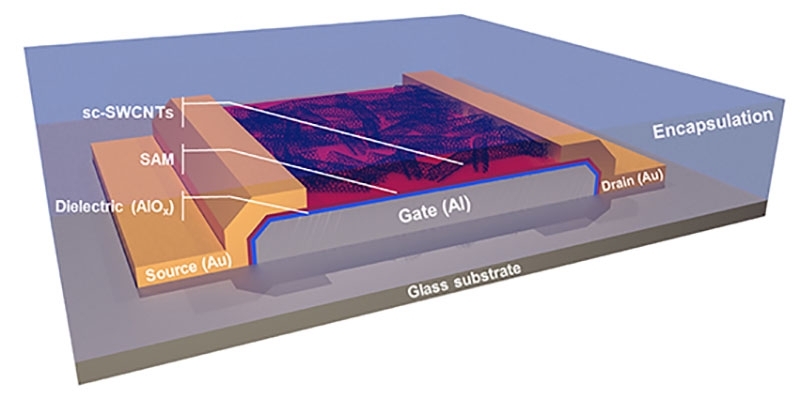Lighting up devices - recharging through ambient energy
With printed carbon nanotubes and solution-deposited self-assembled monolayers, an international team of researchers is developing electronics that they say can operate autonomously.

The supply voltage and power dissipation values are said to be at a record-low compared to other types of printed electronics.
‘We created printed electronics that meet the power and voltage requirements of real-world applications, and opened up opportunities for remote sensing and “place-and-forget” devices that can operate without batteries for their entire lifetime,’ says Professor Vincenzo Pecunia, lead author of the study based at Soochow University, China.
The printed electronics have potential for future imperceptible and batteryless smart sensors for health and wellness monitoring, smart homes, smart packaging and more.
The team, which also includes researchers at the University of Cambridge (UK), the Chinese Academy of Sciences (China), Shanghai Tech University (China), and King Abdullah University of Science and Technology (Saudi Arabia), suggests that its research introduces the paradigm of deep-sub-threshold ambipolar thin-film-transistor (TFT) circuits for the first time.
‘The study demonstrates for the first time that ambipolar sub-threshold TFTs are not sufficient to deliver functional low-power circuits, while “balanced” sub-threshold ambipolar TFTs can deliver ultra-low-power electronics,’ Pecunia adds.
Operating in the deep-sub-threshold region, the transistors are able to run with considerably less current than in the region called above-threshold. This leads to printable electronic circuits that are ultra-low-power and ultra-low-voltage while being easy to fabricate – with the least number of materials and process steps possible – as well as being robust and scalable.
These electronic devices are based on a single undoped semiconductor – carbon nanotubes – printed using aerosol jet printing and deliver balanced ambipolar characteristics when operating in the deep-sub-threshold region.
Pecunia explains, ‘This essentially means that these printed TFTs meet the following conditions: a) they are ambipolar, and b) they are tailored in a way that allows them to provide equally well (i.e., in a balanced way) currents made of negative charges (electrons) and positive charges (holes) in their deep-sub-threshold region.’
This allows the devices to run on very little power so that they can be powered by compact energy harvesters – RF antennas harvesting radiofrequency noise or photovoltaic devices harvesting ambient light – instead of batteries.
Dr. Luigi Occhipinti, co-lead author of the study, who is based at Cambridge’s Department of Engineering, notes that ‘ultra-low-power and ultra-low-voltage printed electronics are in high demand in order to develop low-cost smart devices that can be embedded seamlessly in everyday objects and environments and that can operate throughout their entire operating lifetime using tiny amounts of ambient energy.’
He believes the technology is scalable as it is ‘complementary-like’ – an attribute widely known in electronics to enable the corresponding circuits to be immune to noise and thus scalable to circuits of higher complexity.
‘Finally, given the high stability of our TFTs over time and the reproducibility of their characteristics, we foresee high potential for industrial viability of our technology to scale up in volumes for future products manufacturing.’







